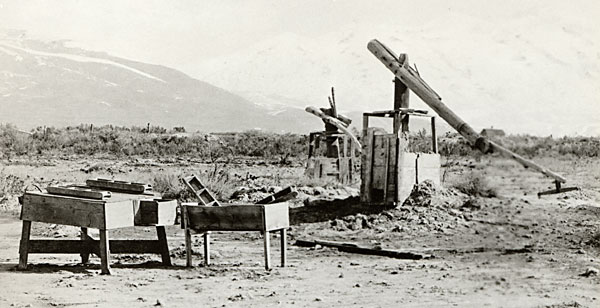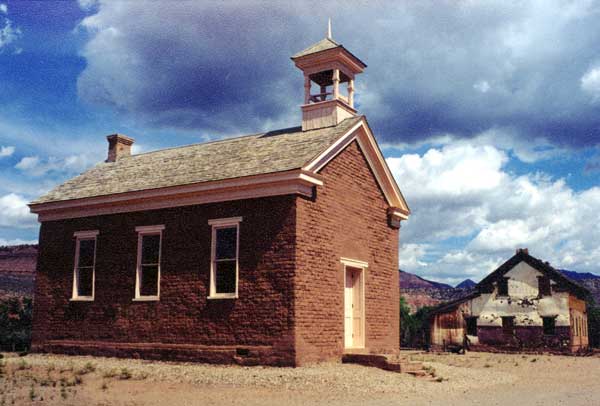 |
||
|
The Pug Mill was where adobe was made
|
|||
|
Sun dried adobe bricks became a practical, inexpensive and popular building material among pioneer Mormon settlers of Utah. This device, known as a pug mill, was used to mix clay, water and straw or weeds and illustrates the inventiveness and ingenuity of the early Mormon settlers. Oxen or horses were harnessed to the arm of the mill and driven around and around, mixing the wet adobe mud placed in the mill. When the mud was well mixed it was extruded out the spout seen at the side of the mill at ground level, and then placed by hand in the molds in the wooden boxes to the left of the mill. After the adobes were somewhat hardened they were removed from the molds and placed in the sun to dry for several days or weeks. Adobes were larger than modern kiln-dried bricks, but in the dry western climate they worked very well as a building material. Although over time, adobe bricks erode from rains, many adobe houses and other buildings were protected from rains by siding or lumber later added to the outer walls, covering the exposed adobe. Adobe houses are still in use in Utah towns such as Oak City and Holden, but they have been enclosed inside other building materials so it is difficult to identify them. The adobe walls on the house in Leamington built by Thomas Morgan are badly weathered as they have had no siding or protection after more than 120 years. But that house is still standing. See our pictures on the Morgan Adobe Houselink. |
|||
|
Sometimes substantial buildings were made of adobe by the early Mormon settlers. This recently restored combination church
and schoolhouse at Grafton, Utah, is an exellent example of a larger and more complex adobe structure. The house in the background,
which has not yet been restored, is also an adobe structure that had outer coverings added in later years.
|
|||

